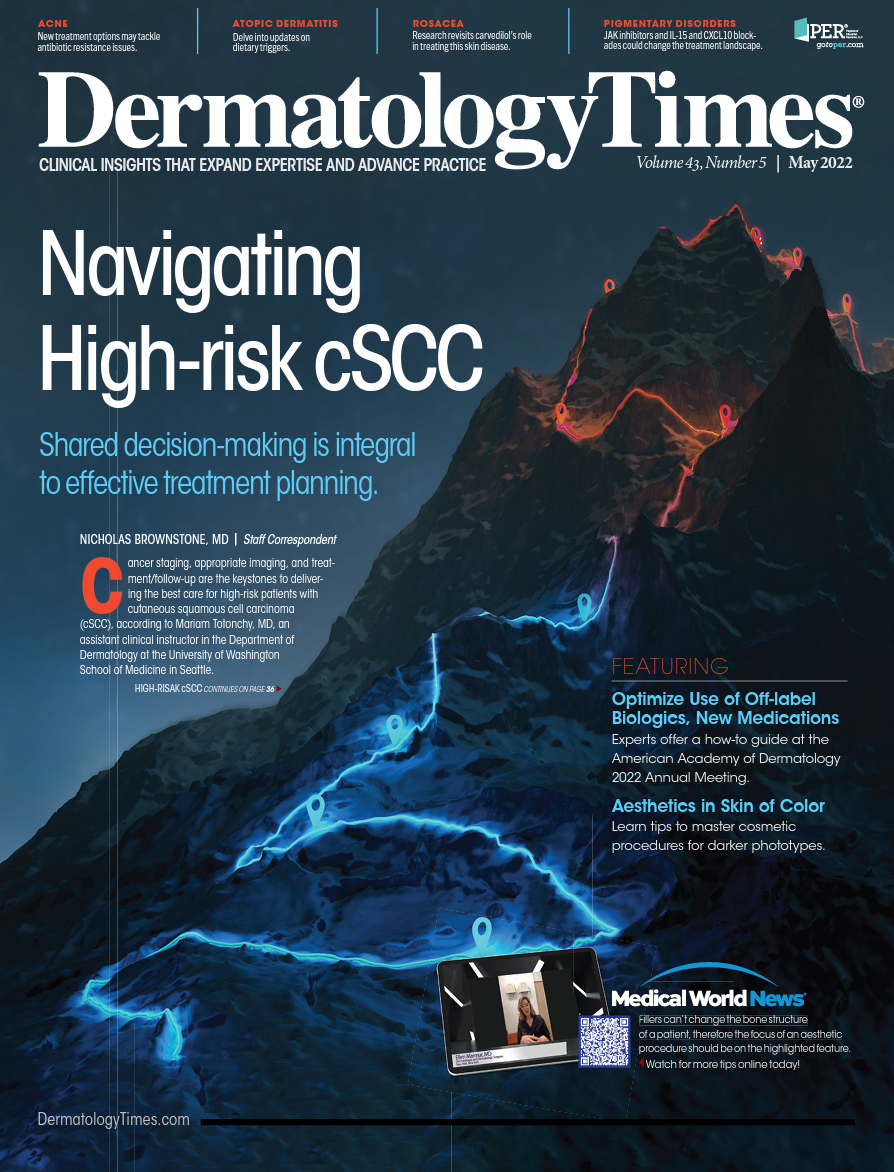- Acne
- Actinic Keratosis
- Aesthetics
- Alopecia
- Atopic Dermatitis
- Buy-and-Bill
- COVID-19
- Case-Based Roundtable
- Chronic Hand Eczema
- Drug Watch
- Eczema
- General Dermatology
- Hidradenitis Suppurativa
- Melasma
- NP and PA
- Pediatric Dermatology
- Pigmentary Disorders
- Practice Management
- Precision Medicine and Biologics
- Prurigo Nodularis
- Psoriasis
- Psoriatic Arthritis
- Rare Disease
- Rosacea
- Skin Cancer
- Vitiligo
- Wound Care
Publication
Article
Dermatology Times
New Cosmeceutical Ingredients
Author(s):
“Medical literature from India and the Middle East is full of reports of success in treating postinflammatory hyperpigmentation and melasma with topical tranexamic acid, but properly powered, well-controlled studies are still lacking.”
Q: What is bakuchiol?
Bakuchiol is a new cosmeceutical antiaging ingredient with purported retinoid effects. It is used in place of retinol to provide a retinoidlike effect without the retinoid irritation. Many of the retinoid products that claim to be “appropriate for sensitive skin” now contain bakuchiol. This meroterpene phenol is abundant in the seeds and leaves of the Psoralea corylifolia plant. Bakuchiol originates in India, where it is used as a spice called babchi. It is purported to possess anti-inflammatory, antioxidant, antiandrogen, and antibacterial properties. It has no structural resemblance to retinoids but appears to function like retinol. In a DNA microarray study, bakuchiol upregulated collagen types I and IV; however, much of the research on this ingredient comes from a single laboratory with a proprietary interest in the product. This retinoidlike ingredient is used in many antiaging moisturizer formulations that makers claim will reduce the appearance of fine lines and improve skin texture.
Q: What is tranexamic acid?
Trans-4-(aminomethyl)cyclohexane carboxylic acid (tranexamic acid) is the newest topical agent for pigment lightening; it is said by many to be the safe alternative to hydroquinone. Since the OTC monograph system was recently completely revised, 2% hydroquinone is no longer allowed in the OTC market, which creates a need for new skin-lightening ingredients. Hydroquinone was effective partly due to its possible melanotoxicity, which is why it was targeted for removal from the OTC market. Tranexamic acid already has an established drug profile and is available in oral form as a prescription antifibrinolytic drug to treat heavy menstrual bleeding by improving blood clotting. It is a synthetic lysine derivative that inhibits plasminogen activator, thereby inhibiting the conversion of plasminogen to plasmin. This lowers arachidonic acid levels and, consequently, prostaglandin levels, which in turn lessens melanocyte tyrosinase activity and skin pigmentation. In addition, tranexamic acid reduces tyrosinase-related proteins (TRP1 and TRP2).
Tranexamic acid has been administered orally, intravenously, intradermally, and topically for pigmentation disorders. Orally, the drug is given in the dose of 250 mg twice daily for 3 months to lighten skin, but tranexamic acid is not FDA approved for this indication. It has been administered with microneedling intradermally, but this is also an off-label indication. Finally, tranexamic acid is showing up in many topical cosmeceutical formulations designed to lighten pigmentation. Medical literature from India and the Middle East is full of reports of success in treating postinflammatory hyperpigmentation and melasma with topical tranexamic acid, but properly powered, well-controlled studies are still lacking. Nevertheless, cosmetic companies are quickly reformulating their hydroquinone skin-lightening products and replacing hydroquinone with tranexamic acid and other skin-lightening ingredients such as niacinamide and licorice extract (Glycyrrhiza glabra).
Q: What is ergothioneine?
Ergothioneine is a naturally occurring amino acid and one of the newest cosmeceutical antioxidant ingredients. L-ergothioneine is a highly effective low-molecular-weight antioxidant that, in the diet, is found through mushrooms. It accumulates in human cells that are subjected to high levels of oxidative damage from reactive oxygen species such as the proteins, lipids, and DNA in keratinocytes. Further, L-ergothioneine may promote DNA repair. Its protective function is possible only in cells that express the L-ergothioneine-specific receptor/transporter OCTN1. Thus, L-ergothioneine and its receptor/transporter are a crucial part of the skin’s antioxidant defenses. It might also be important in the protection of mitochondrial DNA from reactive oxygen species generated by the electron transport chain, making it a systemic antioxidant, as well.
In the prestige market, ergothioneine is finding its way into a variety of topical moisturizer formulations with purported antiaging benefits. Previously, the ingredient was too expensive for use in the mass market, but a decrease in expense has resulted in increased use. Ergothionine is also being used to reduce skin irritation in a variety of formulations because antioxidants are by definition also anti-inflammatory.































